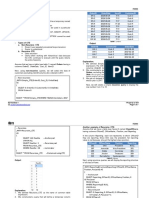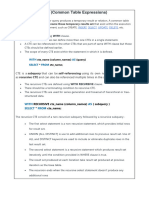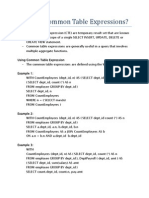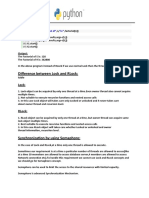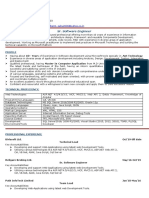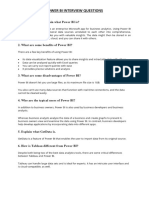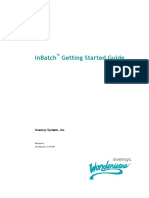0% found this document useful (0 votes)
7 views9 pagesUnit 4 Advanced Data Retrieval and Manipulation
The document covers advanced data retrieval techniques in SQL, focusing on subqueries, correlated subqueries, and Common Table Expressions (CTEs). It explains their definitions, syntax, and provides examples, including recursive and non-recursive CTEs, as well as cumulative sums using window functions. Additionally, it discusses the limitations of CTEs and how they can simplify complex queries.
Uploaded by
perfumemail0Copyright
© © All Rights Reserved
We take content rights seriously. If you suspect this is your content, claim it here.
Available Formats
Download as PDF, TXT or read online on Scribd
0% found this document useful (0 votes)
7 views9 pagesUnit 4 Advanced Data Retrieval and Manipulation
The document covers advanced data retrieval techniques in SQL, focusing on subqueries, correlated subqueries, and Common Table Expressions (CTEs). It explains their definitions, syntax, and provides examples, including recursive and non-recursive CTEs, as well as cumulative sums using window functions. Additionally, it discusses the limitations of CTEs and how they can simplify complex queries.
Uploaded by
perfumemail0Copyright
© © All Rights Reserved
We take content rights seriously. If you suspect this is your content, claim it here.
Available Formats
Download as PDF, TXT or read online on Scribd
/ 9


